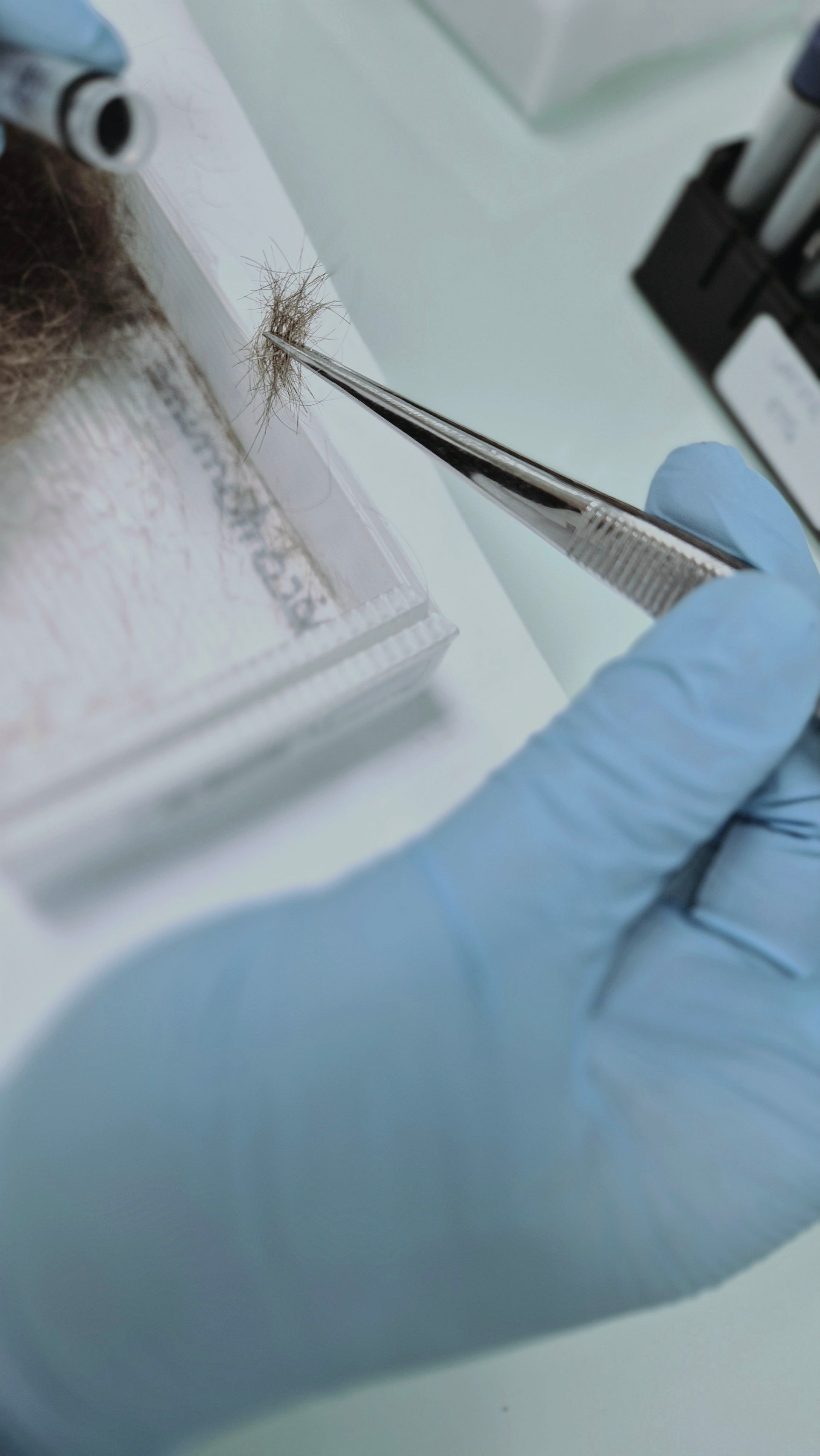ALCOHOL
NARCOTICS
DOPING PRODUCTS
CHEMICAL SUBMISSION
POISONING
Poisoning
A precise analysis to identify toxic products in the hair
ChemTox offers high-precision testing for poisoning detection, an essential expertise for diagnosing toxic substance poisoning. Our testing detects traces of poisoning in hair, a method that provides a global view of exposures to various toxic products, including heavy metals (such as arsenic), cardiotropic substances, rat poisons, and many other toxins. ChemTox uses advanced mass spectrometry technologies to ensure reliable results, whether in a medical, legal or preventive context.

Why choose hair analysis to detect poisoning?
Hair analysis is a preferred method for detecting poisoning because it examines the presence of toxic substances that have accumulated in the body over time. Toxic substances, including heavy metals such as arsenic or chemical poisons such as digitalis and some cardiotropic drugs, can be absorbed by the body and stored in the hair as it grows. Each centimeter of hair represents about one month of growth, providing a retrospective of possible exposures over several months or even years. This extended detection window is valuable for diagnosing chronic or repeated poisonings and for detecting the use of harmful substances even long after exposure.
Hair Analysis Poisoning Detection Process at ChemTox
At ChemTox, the process of detecting poisoning through hair analysis is based on several precise and rigorously controlled steps:
Hair sample collection:
Sample collection is performed in a non-invasive manner. Typically, a strand of hair 3 to 4 centimeters long is taken to allow analysis covering the last few months. Collection follows strict protocols to ensure sample quality and avoid external contamination, thus ensuring reliable and accurate results.
Sample preparation for analysis:
Once the hair sample is collected, it is carefully cleaned and prepared. This step includes a thorough cleaning to remove any external contaminants, followed by chemical and physical decontamination to ensure that only substances ingested by the individual, and not those present in the environment, are detected in the sample.
Analysis of toxic substances by mass spectrometry:
ChemTox uses state-of-the-art mass spectrometry equipment to detect minute traces of toxic substances in hair. This highly sensitive technique is capable of identifying a wide range of poisons and toxic substances, including heavy metals (such as arsenic, lead, and mercury), cardiotropic substances (medications that affect the heart rate), digitalis, and rat poisons. Mass spectrometry offers unparalleled precision in quantifying these toxic substances, even at very low concentrations.
Interpretation of results and analysis report:
After analysis, our experts interpret the data to produce a comprehensive report, including the presence and concentrations of the substances detected, as well as a retrospective of the exposure. This report is structured to be easily understandable for physicians, lawyers, and other professionals, and can be used in a variety of contexts, including forensic examinations, public health investigations, or medical monitoring of potentially intoxicated individuals.
Examples of substances detectable by hair poison analysis
Thanks to our expertise, ChemTox can detect a wide variety of toxic substances that can cause poisoning. Among the detectable products, we find in particular:
Heavy metals (eg arsenic, lead, mercury)
Heavy metal poisoning is common in many settings, both industrial and domestic. Lead and mercury can come from environmental sources, while arsenic is sometimes used in malicious contexts, simply being accessible in some pesticides and chemicals.
Cardiotropic drugs
Some substances used in cardiotropic drugs, intended to regulate the heart rate, can be diverted to poison. The detection of these products in the hair makes it possible to determine voluntary or accidental exposure, particularly in the case of suspected poisoning by a third party.
Digitalis
Digitalis, although intended for therapeutic uses, can cause serious poisoning in case of overdose. They are among the substances regularly tested in hair poisoning analyses to determine whether overconsumption or misuse may have occurred.
Rat poisons and other pesticides
Rodenticides often contain powerful poisons that are intentionally used to eliminate pests but can be extremely toxic to humans. Their detection in hair can help identify exposures, whether accidental or intentional.
Applications of hair analysis in cases of poisoning
ChemTox hair tests are used in several contexts to provide evidence and clarify situations of poisoning or exposure to toxins:

Judicial contexts
Rodenticides often contain powerful poisons that are intentionally used to eliminate pests but can be extremely toxic to humans. Their detection in hair can help identify exposures, whether accidental or intentional.
Medical diagnostics
In criminal investigations, the results of our analyses can be used as evidence to determine whether an individual has been exposed to a toxic substance. Our analysis reports can be used as evidence in court, supporting expert opinions in cases of suspected poisoning or involuntary violence due to toxic exposure.
Preventive surveillance in public health
Physicians may use hair testing to diagnose chronic poisoning in their patients, especially when they suspect exposure to environmental or dietary toxins over a prolonged period of time. Hair testing helps identify possible causes of poisoning symptoms and establish an appropriate treatment plan.
Family or private context
In personal situations, hair analysis may be requested by families or individuals who have doubts about toxic exposure, whether accidental or intentional. This allows to obtain clear information and to act accordingly to protect the health of those exposed.
Speed and confidentiality of results
ChemTox is committed to providing rapid poisoning test results, meeting the needs of our clients, whether medical, legal, or private. Our tests are typically ready within a few days, allowing those affected to act quickly in the event of a confirmed exposure. Confidentiality is paramount to us, and we ensure that all information collected is protected and shared only with authorized individuals.
ChemTox's expertise in hair poisoning detection allows us to respond to complex poisoning situations with high-precision methods. Our hair analyses, supported by advanced techniques such as mass spectrometry, guarantee reliable results to identify a wide range of toxic products, from heavy metals to chemical and medical substances. ChemTox is committed to providing a quality, fast and confidential service for any poisoning detection request.
NAVIGATION
EXPERTISE
Copyright© 2025 ChemTox - Legal notices - Privacy policy - Cookie management policy



